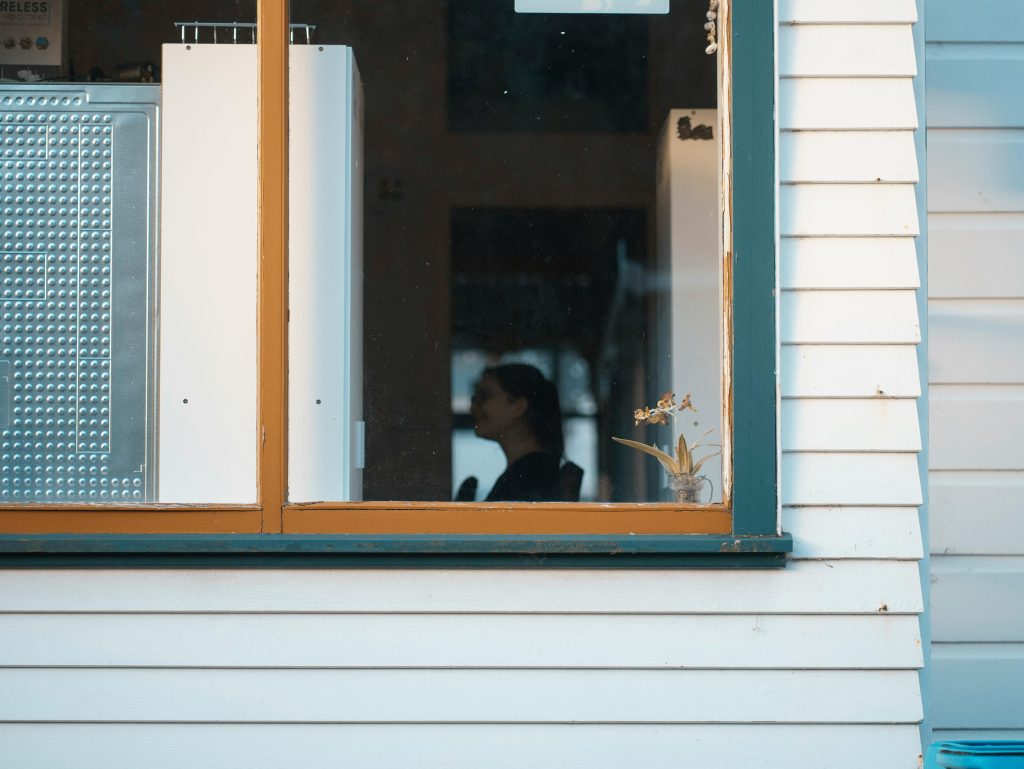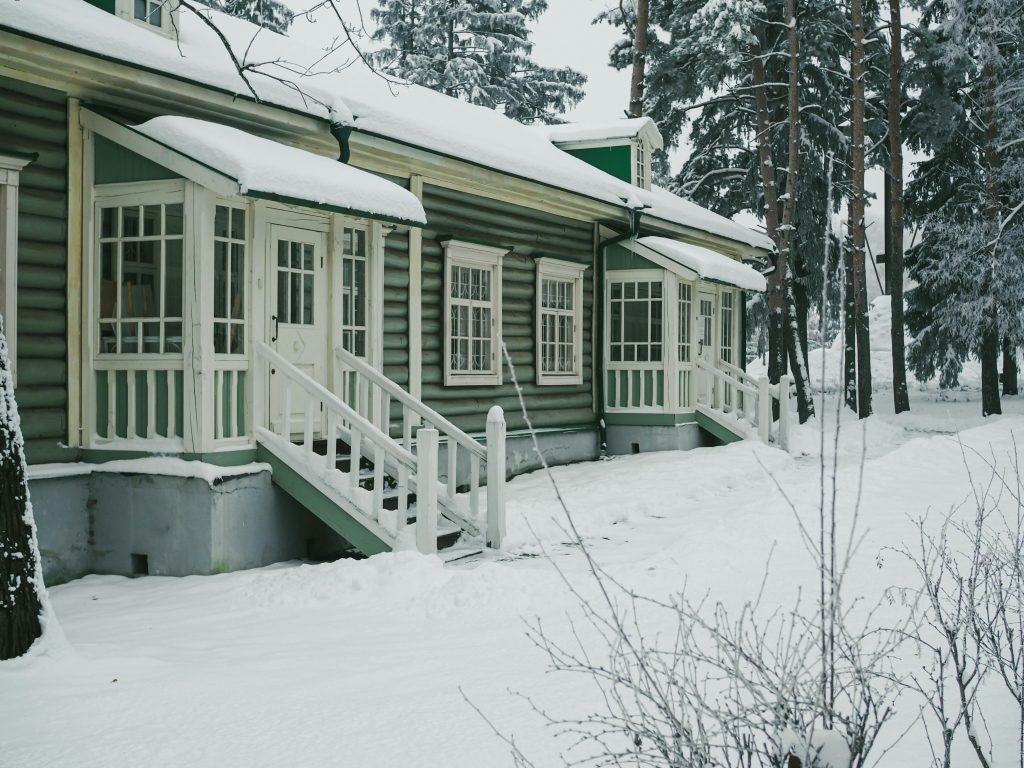Imagine waking up one morning to the endless pounding of rain against your windows or the chilling bite of winter snow wrapping your Maryland home in a frosty embrace. Your house withstands these relentless elements day after day, but how well is it protected? If you’ve ever wondered how to shield your home from harsh weather while boosting its curb appeal, siding installation might just be the answer you need.
Maryland’s climate can be unpredictable, with humid summers, rainy springs, and harsh winters that test the durability of any exterior material. Homeowners here know the struggle of maintaining their homes against these seasonal challenges. That’s why understanding the importance of proper siding installation is crucial. Not only does the right siding protect your home from moisture, wind, and temperature fluctuations, but it also enhances energy efficiency and overall value.
In this article, you’ll discover why siding installation is vital for all-season weather-resistant protection tailored specifically for Maryland homes. We’ll walk you through key considerations, from selecting materials that withstand Maryland’s unique climate to installation techniques that guarantee long-lasting defense against the elements. Whether you’re building a new home or upgrading an old one, knowing what to look for and how to plan your siding installation will empower you to make smart, sustainable decisions.
So, if you’re tired of worrying about ice dams in winter or mold growth after a rainy spring, or if you’re simply keen on improving your home’s exterior with weatherproof charm, keep reading. By the end of this guide, you’ll have the insight needed to ensure your Maryland home stays comfortably protected, season after season, with strategic siding installation designed to endure the state’s weather extremes.
Table of Contents
ToggleWhy Siding Installation Is More Important Than You Think for Maryland Homes
When it comes to protecting your Maryland home, siding installation plays a role far beyond mere aesthetics. Siding installation involves the process of affixing protective materials to the exterior walls of your house, serving as a vital defense against the diverse and often unpredictable weather conditions that characterize the region. Maryland experiences all four seasons distinctly, with hot, humid summers; cold, snowy winters; and periods of intense rain and wind throughout the year. This variability elevates the importance of a high-quality siding installation, tailored specifically for year-round weather resistance.
The importance of siding installation lies in its ability to shield your home from moisture intrusion, temperature fluctuations, and environmental wear and tear. According to a report from the National Association of Home Builders, proper siding installation can reduce energy costs by up to 15%, thanks to improved insulation and protection against drafts. Moreover, the siding acts as a barrier against troublesome pests and reduces the risk of structural damage caused by rain or ice infiltration.
For Maryland homeowners, selecting weather-resistant materials during siding installation ensures their homes withstand everything from blazing summer sun to biting winter winds. Vinyl, fiber cement, and engineered wood siding are among the most popular choices because of their durability and low maintenance needs. Take the story of the Martins family from Annapolis: after a severe storm season brought heavy rains and high winds, their recently installed fiber cement siding withstood the elements without a scratch, preserving the home’s integrity and saving them thousands in potential repairs. Their experience underscores the long-term benefits of investing in professional siding installation designed for Maryland’s climatic challenges.
In summary, siding installation is not just an external upgrade, it is a strategic investment in your home’s longevity, energy efficiency, and comfort. The more severe and variable Maryland’s weather becomes, the more critical it is to have a siding installation that promises resilient protection all year round.
How to Apply Siding Installation Step by Step for Weather-Resistant Protection in Maryland Homes
When it comes to safeguarding Maryland homes against the unpredictable swings of weather throughout the year, siding installation isn’t just a cosmetic upgrade, it’s a crucial line of defense. Implementing an effective siding installation ensures homes stay protected from rain, snow, wind, and scorching sun alike. Whether you’re a homeowner tackling a DIY project or a contractor aiming for high-quality service, understanding each step in the siding installation process is vital for durable, weather-resistant protection.
Here is a detailed, step-by-step guide on how to apply siding installation specifically tailored to Maryland’s diverse climate conditions:
1. Assess and Prepare the Exterior Surface
Before starting the siding installation, a thorough evaluation of the home’s exterior walls is essential.
– Inspect for Damage: Check for rotted wood, mold, or cracks in the walls that could undermine the installation.
– Remove Old Siding (if applicable): Carefully strip off any existing siding or cladding. Dispose of debris properly to avoid obstruction during installation.
– Clean and Level the Surface: Power wash remaining surfaces and repair uneven areas to create a smooth base for new siding.
– Install Weather-Resistant Barrier: Apply a high-quality house wrap or building paper that provides excellent moisture and air barrier properties, an absolute must for Maryland’s humid summers and wet winters.
Example image:
Diagram showing the layers from the exterior wall to siding, including weather-resistant barrier.
2. Choose the Right Siding Material for All-Season Durability
Maryland’s weather demands siding materials that withstand humidity, rain, freezing temperatures, and sun exposure:
– Fiber Cement Siding: Known for its exceptional durability and resistance to moisture, fire, and pests.
– Vinyl Siding: Cost-effective and low-maintenance with good resistance to water and fading.
– Engineered Wood: Offers aesthetic appeal and improved moisture resistance compared to traditional wood.
– Metal Siding: Aluminum or steel options provide strong weather protection and insect resistance but may require insulation for thermal efficiency.
Choose siding products rated explicitly for all-season weather resistance, and always verify manufacturer warranties and performance in humid and coastal environments common to Maryland.
3. Measure and Cut the Siding Panels Precisely
Accurate measurements are critical:
– Measure wall lengths and heights to calculate siding coverage needed.
– Mark cut lines on siding panels using a pencil and straight edge.
– Use appropriate cutting tools (circular saw with fine-tooth blade for fiber cement, tin snips for metal, utility knife for vinyl) to ensure clean cuts.
Precision minimizes gaps or overlaps that can compromise weatherproofing.
4. Install Starter Strips and Corner Posts
Begin the actual siding installation with foundational components:
– Attach starter strips at the base of exterior walls to support the first row of panels.
– Secure corner posts at all vertical edges for a clean finish and additional structural strength.
Ensuring these elements are level and firmly fixed is crucial for the alignment of subsequent siding panels.
5. Fasten the Siding Panels with Proper Technique
To maximize weather-resistant protection:
– Leave slight gaps where required for natural expansion and contraction caused by temperature changes.
– Use galvanized or stainless-steel nails to prevent rusting and corrosion due to moisture exposure.
– Nail in the center of slots (for vinyl siding) to allow for movement without buckling.
– Overlap panels as recommended by the siding manufacturer to block wind-driven rain.
Example graphic:
Cross-section close-up showing nailing technique and overlap.
6. Seal Around Windows, Doors, and Vents
Even with perfect panel installation, water infiltration can occur around openings if not properly sealed.
– Apply high-quality exterior-grade caulk around window and door frames.
– Install flashing strips under siding edges adjacent to vents or eaves.
– Double-check seals after installation for any gaps or missed spots.
7. Inspect and Maintain Seasonal Integrity
Once your siding installation is complete, periodic inspections help maintain long-term weather resistance:
– Check for loose panels or broken seals after storms.
– Clean siding annually to remove mold, mildew, or grime buildup without harsh chemicals.
– Touch up any paint finish (for fiber cement or wood siding) to maintain protective coatings.
Why Following These Steps Matters for Maryland Homes
Maryland’s climate swings from hot, muggy summers to cold, snowy winters, with frequent rain and coastal humidity. Each step of proper siding installation adds a layer of defense, ensuring:
– Moisture doesn’t seep into walls causing structural damage or mold growth.
– Insulation properties of your home remain intact, reducing energy costs.
– Wind-driven debris or storms do not compromise exterior walls.
– Your home’s curb appeal is maintained with clean, professionally installed siding.
By following this comprehensive step-by-step siding installation guide, homeowners can achieve year-round weather-resistant protection, peace of mind, and enhanced property value tailored perfectly for Maryland’s all-season climate.
Ready to start your siding installation? Contact local Maryland siding experts to choose the best material and professional services that ensure your home stays safe and beautiful no matter the season.
Tips for Successful Siding Installation: Weather-Resistant Protection for Maryland Homes
✅ Choose the Right Material: Opt for siding materials like fiber cement or vinyl that withstand Maryland’s humid summers and snowy winters effectively.
✅ Inspect and Prepare the Surface: Before installation, ensure your home’s exterior is clean, dry, and free of damage to guarantee proper adhesion and durability.
✅ Install a Weatherproof Barrier: Use a high-quality house wrap or moisture barrier behind the siding to prevent water infiltration and improve energy efficiency.
✅ Seal All Edges and Joints: Apply caulking and sealants at seams, corners, and around windows to block out drafts, moisture, and pests.
✅ Use Proper Fastening Techniques: Secure siding panels with corrosion-resistant nails or screws to withstand Maryland’s wind storms and temperature fluctuations.
✅ Include Adequate Ventilation: Proper ventilation behind the siding prevents moisture buildup that leads to mold and wood rot.
✅ Schedule Installation in Mild Weather: Plan your siding project for spring or fall in Maryland, avoiding extreme heat or cold that could affect material expansion or adhesion.
✅ Regular Maintenance Checks: After installation, inspect siding annually for cracks, loose panels, or damage caused by storms to maintain long-lasting protection.
💡 Extra Tip: Consider insulated siding options to boost your home’s energy efficiency and keep indoor temperatures stable throughout Maryland’s diverse seasons.

Key Concepts
Siding installation, especially in the context of providing all-season weather-resistant protection for Maryland homes, is far more than just attaching exterior panels to a building. It is an intricate synergy of materials science, architectural integrity, and environmental adaptation. By understanding the foundational concepts behind siding installation, one can appreciate how this seemingly simple task becomes a critical guardian against the diverse and often challenging Maryland climate.
The Essence of Siding Installation as a Protective Shield
Imagine the siding on a Maryland home as a warrior’s armor, meticulously crafted and layered to withstand battles against ever-changing weather conditions. This armor must be resilient, yet flexible; impermeable to moisture, yet breathable enough to prevent trapped condensation. It is this balance that underscores the complexity of siding installation. The siding acts as the first and foremost line of defense, mitigating the damage caused by rain, wind, snow, and the intense summer sun.
Just as a knight’s armor is custom-designed for each campaign, the choice and installation of siding must be tailored to local environmental stresses. Maryland experiences a medley of weather extremes, in the humid summers and frigid winters, the siding must sustain its form and function without faltering.
Material Science: The Backbone of Weather Resistance
The varieties of siding available, vinyl, fiber cement, wood, brick veneer, and metal, each possess intrinsic properties that determine their suitability for withstanding Maryland’s climatic nuances. Vinyl siding, for instance, is like the versatile athlete of the siding world: lightweight, flexible, and resistant to moisture intrusion. Its installation must account for expansion and contraction, much like how a dancer adjusts to the floor’s movements.
Fiber cement siding, by contrast, behaves as a sturdy fortress wall, resistant to fire and pests, enduring the test of time and storms. Its installation demands precision and expertise, ensuring that no gaps allow moisture to breach the defensive barrier.
Understanding the material science behind siding reveals a delicate dance, each material responding differently to temperature fluctuations, humidity, and UV exposure. Proper siding installation means harmonizing these responses with the natural environment, achieving a durable and effective protective layer.
The Role of Weatherproofing Layers: Beyond Aesthetic
Beneath the outer siding lies a crucial but often overlooked element, the weather-resistant barrier or WRB. Think of the WRB as the home’s second skin, a crucial intermediary that prevents water penetration while allowing vapor to escape. This function is vital in Maryland, where heavy rains and snow can compromise exterior layers, leading to mold, rot, or structural damage.
The WRB’s effectiveness is a testament to the true complexity of siding installation: it requires not just the application of siding panels but the integration of an entire system designed for moisture management. Installing siding without addressing this inner barrier would be akin to dressing a wounded soldier in new armor without treating the underlying injury.
Seasonal Dynamics: Adapting Installations to Maryland’s Climate
Maryland’s climate acts as a series of unpredictable shifts, from muggy summers to icy winters and volatile spring storms. Siding installation must embrace this rhythm, not resist it. The expansion and contraction caused by temperature swings can lead to warping, cracking, or gaps in siding if not properly accounted for during installation.
Consider a seasoned sailor adjusting sails to catch the wind perfectly instead of fighting it. Similarly, siding must be installed with mindful spacing to allow movement without compromising tightness. Hasty or rigid installations neglect this essential flexibility, resulting in weaknesses that weather events will exploit.
Architectural Integration: Form Meets Function
Siding installation is also an art of architectural harmony. The siding must envelop the home seamlessly, complement structural elements such as windows, doors, and eaves. Gaps, overlaps, and transitions in siding are like the seams in a tailored suit, if poorly executed, they become points of failure, inviting weather to breach the interior.
Moreover, Maryland homes often showcase diverse architectural styles, from colonial to modern craftsman. Siding installation must honor these styles while fulfilling the stringent demands of weatherproofing. This balance transforms siding from a mere protective shell into an integral component enhancing curb appeal and reinforcing historical or contemporary character.
Long-Term Investment: Durability as a Legacy
Beyond the technicalities, siding installation embodies a long-term investment mindset. The proper installation extends the lifespan of the siding, reducing future maintenance costs and preserving the home’s structural health. It is like planting a resilient tree that continues to shield the home for decades, growing stronger each season.
In Maryland’s environment, where the weather can be both friend and foe, siding installation performed with depth and precision serves as a lasting bulwark against the elements. This longevity is the ultimate testament to understanding the layered complexities involved in siding installation.
In essence, siding installation for all-season weather-resistant protection in Maryland homes is a multifaceted discipline. It combines material science, environmental adaptation, moisture management, architectural skill, and strategic foresight. This holistic approach transforms siding from a decorative afterthought into a formidable guardian ensuring homes remain safe, durable, and beautiful through Maryland’s diverse seasons.
Frequently Asked Questions about Siding Installation for Maryland Homes
❓ What is siding installation and why is it important for Maryland homes?
Siding installation involves fitting protective material on the exterior walls of a home. For Maryland homes, proper siding installation is crucial because it provides weather-resistant protection against the region’s varied climate, from hot summers to cold, wet winters.
❓ Which siding materials offer the best weather resistance for all seasons in Maryland?
Materials like vinyl, fiber cement, and engineered wood are popular for their durability and resistance to humidity, wind, and temperature fluctuations. Fiber cement siding, in particular, is known for standing up well against Maryland’s rainy and snowy seasons.
❓ How long does siding installation typically take?
The timeline depends on the size of the home and the siding material used. On average, siding installation can take anywhere from one to three weeks. Proper preparation for Maryland’s weather conditions can extend or shorten this timeframe accordingly.
❓ Can siding installation improve my home’s energy efficiency?
Yes! Installing insulated siding or combining siding with adequate house wrap and insulation helps reduce energy loss. This leads to better indoor temperature control, which is especially beneficial during Maryland’s hot summers and cold winters.
❓ How do I maintain my newly installed siding throughout the year?
Regular maintenance, such as cleaning mildew or debris and inspecting for damage, helps siding last longer. Maryland homeowners should particularly watch for water damage after heavy rains or snowmelt to ensure their siding continues offering robust weather protection year-round.


